Section 3.2
Status of Species at Risk
25 speciesis the number of species at risk tracked by Al-Pac in the FMA area.
This includes 17 bird species, 5 mammals, and 1 species each of amphibian, fish, and invertebrate.
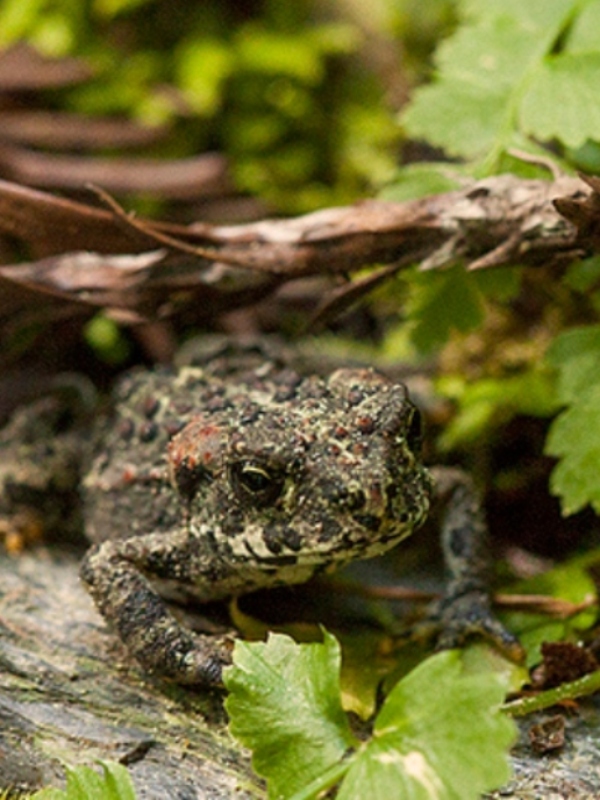
Western Toad (Anaxyrus boreas)
Photo: ABMI

Yellow Rail (Coturnicops noveboracensis)
Photo: Hugues Brunoni
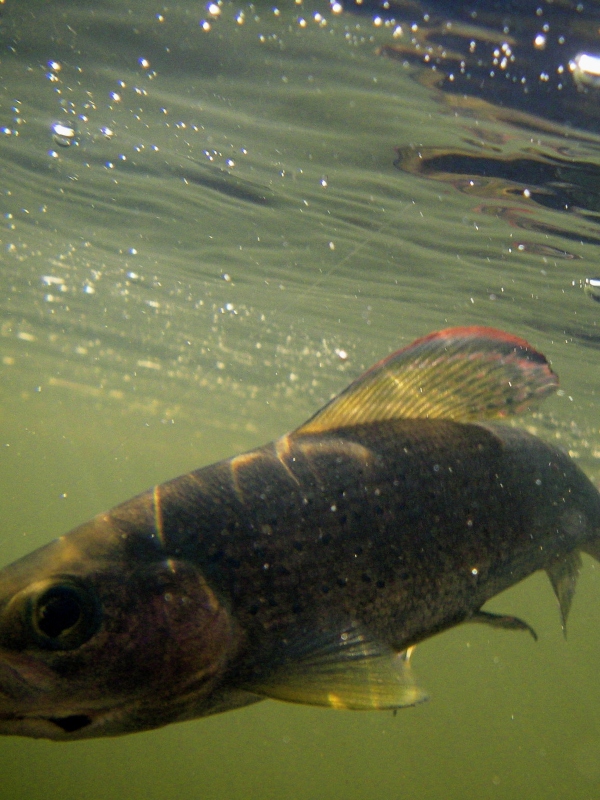
Arctic Grayling (Thymallus arcticus)
Photo: Scratch
Introduction
The health of biodiversity in a region includes an assessment of species that are naturally rare or that have demonstrated a significant decline in abundance. These species are generally referred to as “species at risk” because future declines in abundance may result in the loss of the species from an area. Identifying and tracking changes in important habitat features for species at risk is vital to understanding how land use affects these sensitive species over time.
Al-Pac defines "Species at Risk" (SAR) as those species that occur within the FMA area based on range maps, records, and expert knowledge, and that are:
- federally listed as endangered, threatened or of special concern under SARA;
- provincially listed as endangered, threatened or of special concern under the Alberta Wildlife Act;
- species recommended for listing federally by COSEWIC or provincially by Alberta’s Endangered Species Conservation Committee (ESCC);
The list of SAR in the Al-Pac FMA area is updated annually.
Principle 6: Environmental Values and Impacts | Principle 8: Monitoring and Assessment | Principle 9: High Conservation Values
Criterion 6.4 – Protection of rare and threatened species and their habitats
ABMI data and reporting broadly support FSC Indicator 6.4.1 by providing ‘best available information’ on ABMI-monitored species at risk and their habitat associations, occurrence, and status (as measure by the Biodiversity Intactness Index) within the forest.
ABMI data and reporting broadly support FSC Indicator 6.4.8 by demonstrating the collection of data on (2) and monitoring of (4) populations of species at risk in the Al-Pac FMA and AEI.
Criterion 8.2 – Monitoring and evaluating environmental and social impacts of activities carried out in the management unit
FSC Indicator 8.2.3 (2) is supported by providing up-to-date ‘best available information’ on ABMI-monitored species at risk (linked to FSC Criterion 6.4).
Criterion 9.4 – Monitoring to assess changes in status of High Conservation Values and adaptation of management strategies to ensure protection
ABMI monitoring data broadly support FSC Criterion 9.4 by providing ‘best available information’ on identified species at risk, including occurrence and intactness (a measure a habitat suitability) within the forest.
Results
As of 2019, Al-Pac’s tracked list of SAR in the FMA area includes 25 species (Table: Species At Risk). The ABMI detected nine of these species—all birds — in the FMA area with enough frequency to calculate intactness.
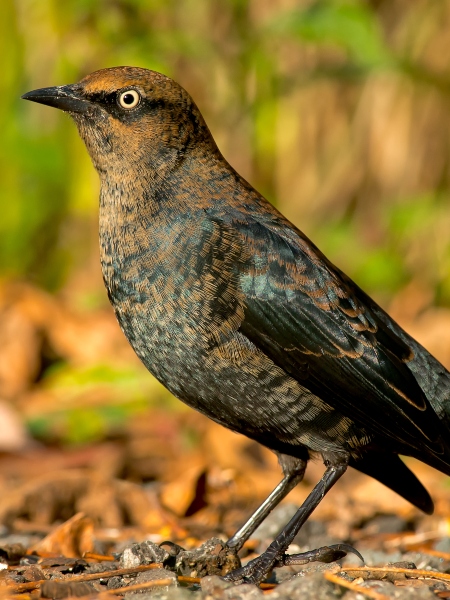
Rusty Blackbird (Euphagus carolinsus)
Photo: Paul Reeves
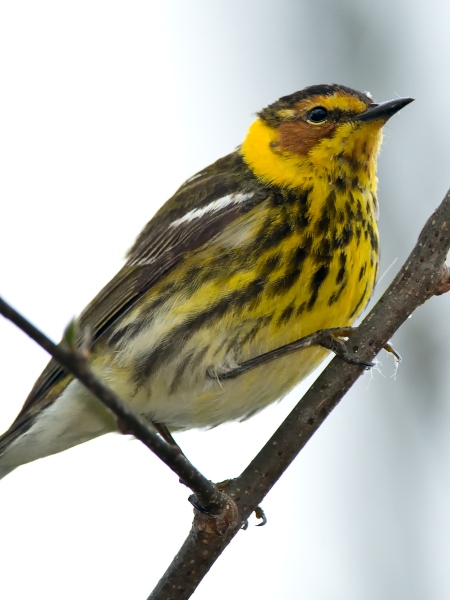
Cape May Warbler (Setophaga tigrina)
Photo: Paul Reeves
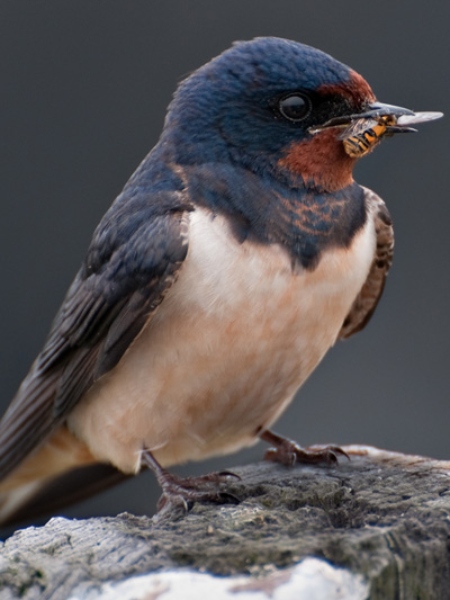
Barn Swallow (Hirundo rustica)
Photo: ABMI
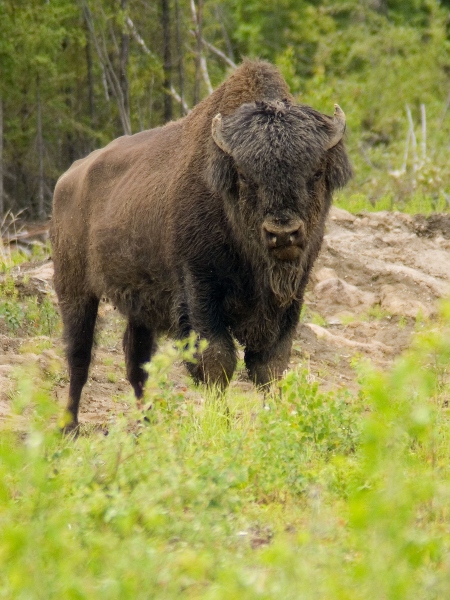
Wood Bison (Bison bison)
Photo: Chris Koloczan
2020 Highlights
- The habitat suitability for nine bird species was lower than expected compared to reference conditions with intactness ranging from 75.0% intact (Black-throated Green Warbler) to 99.0% intact (Rusty Blackbird).
- The species whose intactness deviated most from reference conditions are all old-forest dependent species, including: Black-throated Green Warbler (75.0% intact), Canada Warbler (85.3%), Bay-breasted Warbler (85.5%), and Cape May Warbler (90.2%). Habitat suitability for these species is reduced by activities that impact their old-forest habitat, such as forest harvesting.
- There are four species at risk that are similar to intact reference conditions in the Al-Pac FMA area including Rusty Blackbird (99.0%), Olive-sided Flycatcher (98.1%), Common Nighthawk (98.1%), and Barn Swallow (97.9%).
- During the breeding season, Common Nighthawk and Olive-sided Flycatcher require open clearings near forests and wetlands with an abundance of flying insects for foraging. Activities that increase open areas, such as forestry, improve habitat suitability for this species.
- Rusty Blackbird nest in wet woodlands and swamps, habitats largely undisturbed in the Al-Pac FMA area; as a result, current habitat suitability is similar to undisturbed reference conditions.
- The Barn Swallow is not common in the region but habitat suitability for this species increases in open, human-modified landscapes.
- Note that all these species have well-documented large population declines. Intactness is a measure of predicted effects of local human footprint; it is not a measure of population trend.
These results have benefited from collaboration between the ABMI and various partners and contributors. More details are available in Collaborators and Contributors.
Canada Warbler
Status: SARA-Threatened | COSEWIC-Threatened
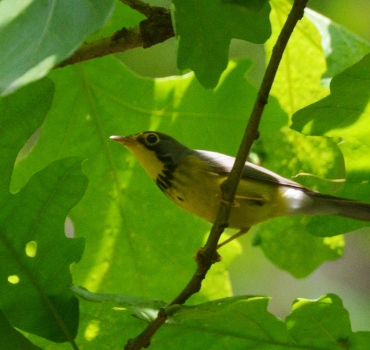
Canada Warbler prefers old deciduous and mixedwood forest for nesting in Alberta.
Photo: Chrissy McClarren
The Canada Warbler is one of several bird species at risk occurring in the Al-Pac FMA area associated with mature forest habitats. It is "at risk" due to population declines, and anticipation of continued future habitat alteration and/or loss within its breeding grounds and wintering grounds. As a result, this species is federally listed as Threatened[1].
Common Nighthawk
Status: SARA-Threatened | COSEWIC-Special Concern
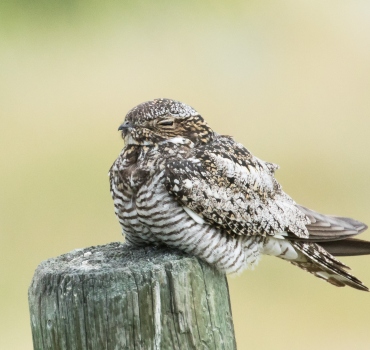
Common Nighthawk breeds in a variety of open habitats with abundant insect prey.
Photo: Nicholas Parayko
Although the Common Nighthawk is commonly detected in suitable boreal habitats in northeastern Alberta, including the Al-Pac FMA area, human activity- and climate-related changes to food and nest-site availability continue to pose threats to Common Nighthawk populations in other parts of their range. As such, this species is listed as Threatened in Canada[2].
| Image | Taxon | Common Name | Scientific Name | Occurrence (%) | Biodiversity Intactness | Habitat Suitability Increase or Decrease | Status |
|---|
References
Environment Canada. 2016. Recovery Strategy for the Canada Warbler (Cardellina canadensis) in Canada. Species at Risk Act Recovery Strategy Series. Environment Canada, Ottawa. vii + 56 pp.
COSEWIC. 2007. COSEWIC assessment and status report on the Common Nighthawk (Chordeiles minor) in Canada. Committee on the Status of Endangered Wildlife in Canada. Ottawa. vi + 25 pp. (www.sararegistry.gc.ca/status/status_e.cfm).
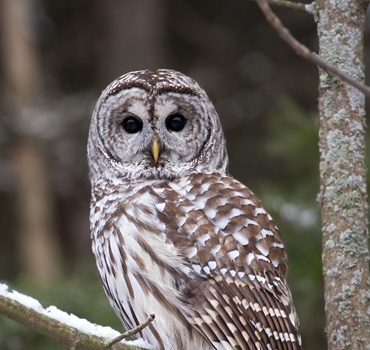
Barred Owl (Strix varia)
Photo: ABMI





